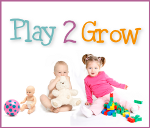When I started this course, I knew almost nothing about planning or designing a research study. I learned about quantitative vs. qualitative research and the steps involved in creating a research design. One lesson that I learned was that it takes a lot of time to design research. It is necessary to break it down into steps and later you can go back and change some of the plans to fit your needs. I also learned that it is more manageable in smaller steps. When you look at designing the entire research project at once, it is intimidating.
My first challenge was choosing a topic and sticking with it. My first two topics didn’t work out because during the literature review, I didn’t find any information. However, I learned along the way that I wasn’t looking in the right places. Using the Walden library has always been a challenge, but it is getting easier. I finally settled on the topic of infant friendships and with some modifications for each style of research, I was able to use it throughout the course. Another challenge was developing a hypothesis. This is where I had to modify my research question to make a hypothesis work. Then later in the course, I learned that when you use qualitative research, a hypothesis isn’t necessary. This fit my study better because I was looking at more than one variable. Keeping track of the terms and what they meant were a challenge. Some of the terms that were confusing to me at first were independent vs. dependent variables and qualitative vs. quantitative research. Doing the research simulations helped me to better understand these concepts.
Now I have a better understanding of what it takes to do research with children. I don’t feel I’ve changed a lot as a professional after taking this course, but now I can easily read research articles. This will help as it’s important to keep up with the latest information in the field. I have more respect for researchers and the work they do. If it weren't for researchers, we wouldn't have as much knowledge in the field. I also learned that you don’t have to do formal studies to be a research project. We are researcher’s everyday when we ask questions and try to find the answers. For example, one of my questions at the beginning of this course was, how can I expand my preschoolers play themes past trains and cars? Since then, we have tried a few different things in our classroom. We have added some new materials to centers, have stopped allowing toys from home and we have introduced new themes. The trains are still a favorite center, but the children seem more willing to try the other centers as well.
When I think back to the first week of the course, I wondered how I would get through it. I did a lot of work, learned new information and am glad I finished the course. I want to thank everyone for their support and helpful and insightful comments on the blogs and discussion boards. I look forward to seeing some of you in the next course.
The Vital Power of "Followership"
2 days ago

